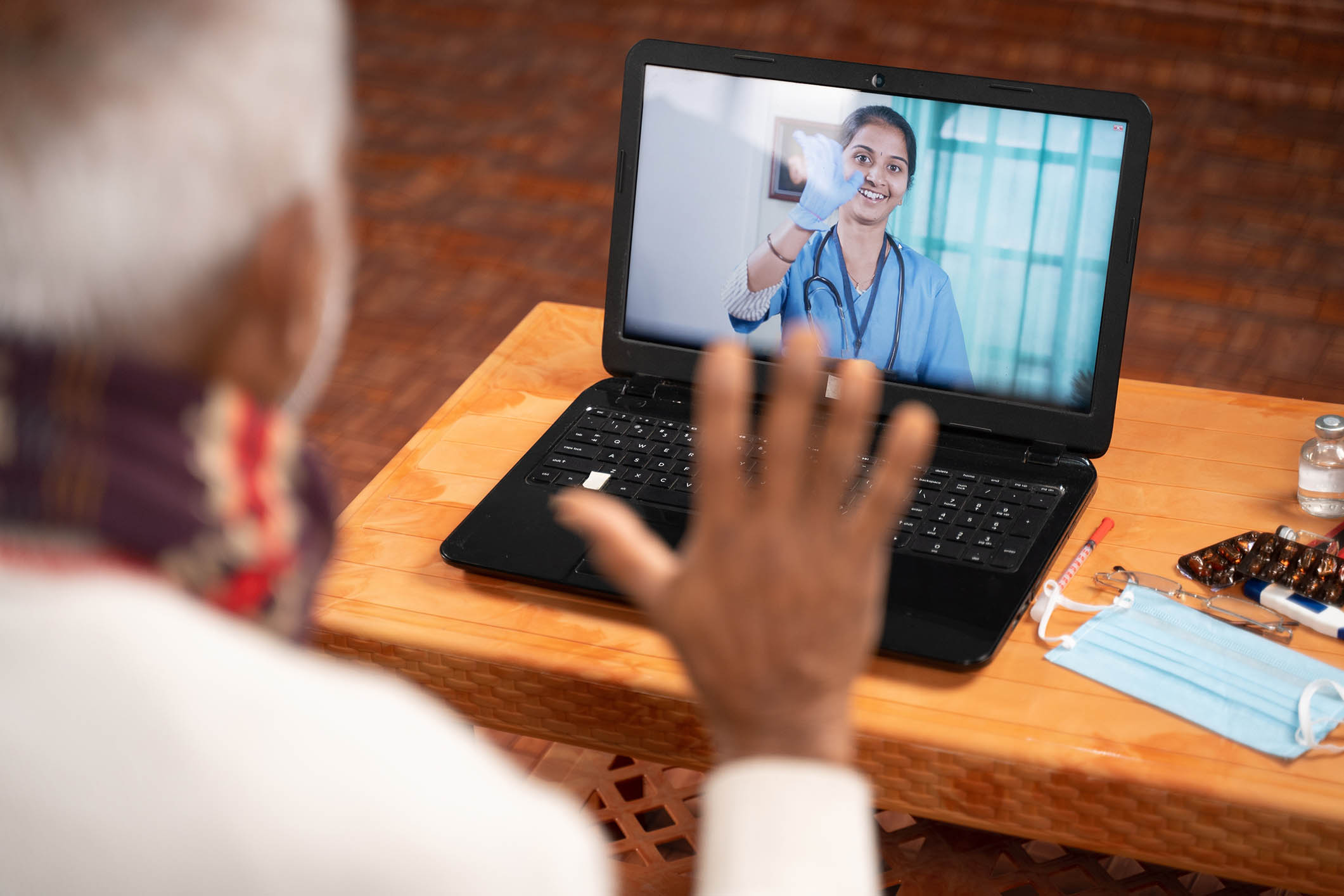By Heather Butler and Aakanksha Deoli
Telehealth use in the United States has skyrocketed among healthcare providers and patients since the advent of the COVID-19 pandemic. Between 2019 and 2020, the number of telehealth visits increased by more than 150 percent. Medicare beneficiaries constitute a substantial portion of telehealth users, and their usage has increased 63-fold (primarily to reduce exposure to COVID-19). In addition, the increased utilization can also be partially attributed to the measures taken by the federal government in response to the public health emergency (PHE).
In the face of social distancing and quarantining protocols, policymakers were drawn to telehealth’s ability to administer remote health services. One of the first efforts made by the Centers for Medicare and Medicaid Services (CMS) in light of the PHE was its expansion of telehealth coverage for Medicare beneficiaries. Starting March 6, 2020, CMS announced that it would grant waivers that temporarily compensate providers for telehealth services at the same rate as in-person visits. As a result of the new regulation, researchers found that the waivers enhanced Medicare beneficiaries’ access to telehealth: outpatient telehealth visits increased from one percent to 10 percent among Medicare beneficiaries. Furthermore, the greatest odds of utilization were experienced by people living in low-income neighborhoods.
Weeks after CMS’ waiver expansion, on March 27, 2020, Congress issued further telehealth flexibilities in the Coronavirus Aid, Relief, and Economic Security (CARES) Act. In various sections of the statute, it ensured advanced access to telehealth; for example, the act states that all providers are permitted to offer telehealth care for Medicare beneficiaries—not just rural providers. In addition, it increased the types of providers who can perform Medicare-covered telehealth services, including physical therapists and speech-language pathologists. Furthermore, the act permitted Medicare to cover audio-only health visits, often used by beneficiaries who do not have adequate access to the internet or lack digital literacy. Some Medicare populations with high utilization rates of audio-only care include ethnic and racial minorities, those aged 75 and older, dually-eligible beneficiaries who qualify for both Medicare and Medicaid benefits, and nonprimary English speakers. For instance, drawing from data from the 2020 Medicare Current Beneficiary Survey (MCBS) Public Use Files, Black Medicare beneficiaries were offered audio-only services significantly more than White beneficiaries: 50.1 percent and 35.1 percent, respectively.
Older individuals, which make up the majority of Medicare recipients, often lack digital literacy1, as found in a study on the utilization of telemedicine in older adults in independent living facilities. In the study’s survey, only 36.5 percent of elders knew how to connect with their healthcare provider through telehealth video visits. To mitigate this problem, researchers have identified “virtual rooming” as a possible solution in which a clinical provider greets patients and familiarizes them with the technology. According to a study published in JAMA Internal Medicine, the authors found that connecting patients with a medical assistant who walked them through the technology before their visit significantly enhanced the quality of telehealth appointments; connection rates were 9.8 percent higher among Latinx patients and 13.1 percent higher among patients who needed language interpretation. However, further research is needed to establish whether virtual rooming can increase successful telehealth interactions among Medicare beneficiaries.
Nonetheless, not all Medicare beneficiaries have access to the internet or a phone and most pandemic-era legislation failed to address this digital divide. According to the 2020 MCBS Public Use Files, in late 2020, 92.2 percent of beneficiaries had at least one type of equipment available for accessing telehealth; however, researchers discovered that non-English speakers, lower-income individuals, older adults, and racial/ethnic minorities had reduced access to telehealth equipment. Some examples to overcome these challenges include improving access to affordable broadband services, providing low-cost telecommunication devices, and establishing digital literacy programs. Congress has recently created the Affordable Connectivity Program, which sets a price ceiling for high-speed internet plans for low-income, disabled, and other eligible individuals; however, it is unclear if the initiative will effectively increase access.
On March 15, 2022, President Biden authorized the Consolidated Appropriations Act, 2022, which renewed pandemic-era expansions to telehealth coverage for 151 days after the end of the federal PHE. Originally scheduled to end in mid-July, the government extended the PHE for an additional 90 days, and it is possible that they will extend it even further in the future. Although such policies will advance the quality of healthcare for Medicare beneficiaries, some are concerned that such provisions will be indefinitely discontinued, for example reimbursement for audio-only services, if Congress does not follow up with additional telehealth legislation after the 151 days expire.
Overall, telehealth has clearly broadened healthcare access for many Medicare recipients; however, despite the expansion in telehealth policies, challenges with respect to digital literacy and the digital divide continue to exist among Medicare beneficiaries, especially the elderly, racial and ethnic minorities, and those with low socio-economic status. There is, therefore, a definite need for lawmakers and providers to recognize the specific needs of the Medicare population in order to reduce disparities that impede access to quality care.
- Digital Literacy- Digital literacy is defined as an individual’s ability to search, find, evaluate, and compose clear information through typing, writing, tapping, and by using other mediums (e.g., multimedia videos, video calling, and messaging) on various digital platforms, which requires a basic level of computer competency (Bawden, 2008).
_________________________________________________________________________
Heather Butler is an undergraduate student at the School of Environmental & Biological Sciences at Rutgers, The State University of New Jersey.
Aakanksha Deoli, MHA is an Instructor of Teaching and UG Internship Coordinator at Edward J. Bloustein School at Rutgers, The State University of New Jersey.

